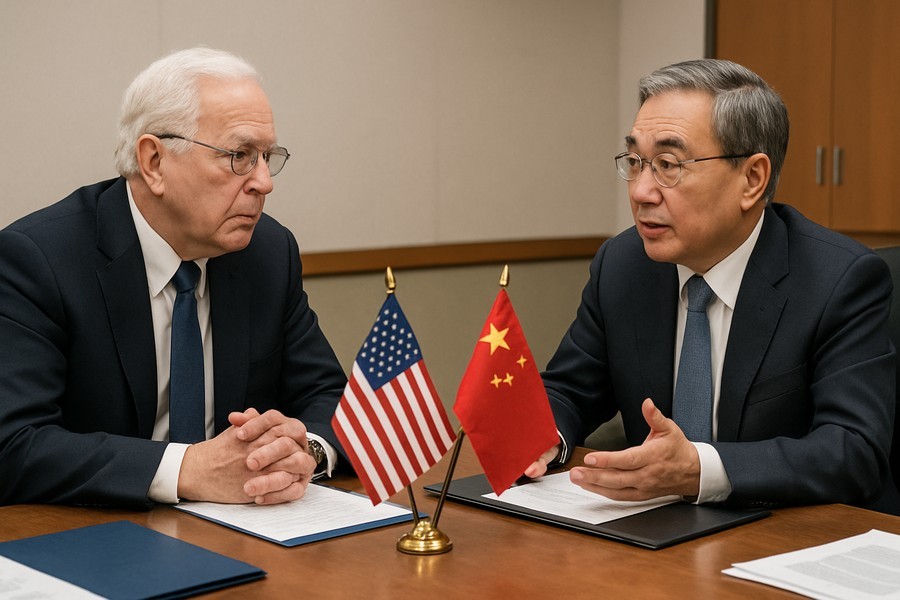
A Trade Deal Blueprint between the US and China Emerges Before Leaders' Meet
Just before the scheduled meeting between the leaders of the United States and China, both nations have come to an understanding on the fundamental structure for a trade agreement. This development has the potential to avert the risk of a massive 100% tariff that was set to be imposed on Chinese imports beginning early November. The agreement also includes a final resolution concerning the sale of a popular social media app within the US.
The US leader, who landed in Malaysia to attend an international conference, is on a five-day tour of Asia. It is anticipated that the trip will culminate with an in-person meet with his Chinese counterpart in South Korea towards the end of the week.
An Optimistic Note from US Leadership
Following the discussions, the leader of the US sounded hopeful, predicting a successful deal with China. As part of the understanding, China has agreed to a one-year postponement on the export controls for minerals crucial for the manufacture of fighter planes, smartphones, and electric vehicles.
China's leading trade negotiator stated that both nations had arrived at an initial agreement and will proceed with their individual internal approval procedures. He acknowledged that the US had taken a firm stance during the negotiations but commended the constructive exchange of ideas in finding solutions to the concerns raised.
Prospects of Truce with Brazil
There's also an expectation of a ceasefire in trade tensions between the US and Brazil. This comes after a productive meeting between the US leader and his Brazilian counterpart in Malaysia. The teams from both countries are set to start discussions on tariffs and other issues immediately.
The understanding between the US and China lessens the likelihood of a full-blown global trade war that could have severely affected car production across Europe and the UK. This follows a period of increased trade tensions between the two economic giants, sparked by a tariff announcement made by the US leader earlier this year.
China's Firm Stance
Just days before the current tariff ceasefire was set to end, the Chinese leader demonstrated his resolve not to bow down to threats of 100% tariffs from the US. Instead, he tightened his grip on the US by imposing controls on the exports of rare earth minerals - a crucial component used in the electronic window and trunk systems of cars.
The US leader accused China, which controls a significant portion of the global production and refining of rare earths, of becoming increasingly hostile and trying to monopolize the world. China also dealt a blow to the US agricultural sector by halting the purchase of soybeans from the US. As a major customer of US soybeans, this move significantly impacted the US market.
The US remains hopeful of a successful framework for the leaders to discuss later in the week. The country expects an extension of the tariff ceasefire with China beyond its initial expiry date in November and believes that China will renew substantial purchases of US soybeans.
Positive Outlook for US Soybean Farmers
It is anticipated that US soybean farmers will be pleased with the deal for this season and the coming years once the terms are announced. Both countries have agreed to halt some punitive actions and are looking forward to better access to rare earths from China and a more balanced trade deficit with sales from the US.
Trade tensions had also escalated between Brazil and the US since the latter increased tariffs on most Brazilian goods considerably a few months ago. The Brazilian leader confirmed that their teams would convene immediately to explore solutions to the tariffs and sanctions against Brazilian authorities. This followed a meeting after which the US leader had tied the tariff increase to what he termed a "witch-hunt" against the former president of the South American country.
